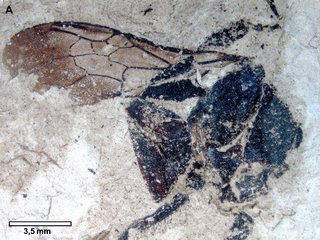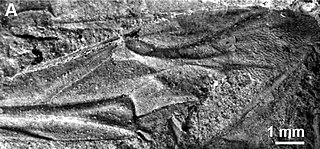 W
WAndrena antoinei is an extinct species of mining bee in the family Andrenidae described from a single fossil found in a Late Oligocene lake in present-day France that existed in semi-arid conditions.
 W
WBombus cerdanyensis is an extinct species of bumble bee in the family Apidae known from a fossil found in Europe.
 W
WBombus randeckensis is an extinct bumblebee from the Miocene rocks of the Randeck Maar in southwestern Germany. It was discovered in 2012, and initially placed in the subgenus Bombus, however, review of the Bombini fossil record by Dehon et al in 2019 concluded B. randeckensis should be placed in Bombus subgenus Cullumanobombus.
 W
WBombus trophonius is an extinct species of bumble bee known from a Miocene fossil found in Europe. It belongs to the Bombus subgenus Cullumanobombus and is considered most similar to the living species Bombus rufocinctus of North America.
 W
WCalyptapis is an extinct bombini genus related to bumblebees with one described species Calyptapis florissantensis. It is known only from the Late Eocene Chadronian age shales of the Florissant Formation in Colorado. the genus and species were described by Theodore Dru Alison Cockerell in 1906.
 W
WEuglossopteryx is an extinct genus of bee in the family Apidae known from a fossil found in North America. There is one described species in the genus, Euglossopteryx biesmeijeri.
 W
WThe genus Halictus is a large assemblage of bee species in the family Halictidae. The genus is divided into 15 subgenera, some of dubious monophyly, containing over 200 species, primarily in the Northern Hemisphere. Most species are black or dark brown, sometimes metallic greenish-tinted, with apical whitish abdominal bands on the terga.
 W
WOligobombus is an extinct genus of bumblebee relatives in the tribe Bombini, containing the single species Oligobombus cuspidatus. The genus and species were described by Antropov (2014) based on a single fore-wing from the Late Eocene Bembridge Marls Insect Bed on the Isle of Wight, England. The fossil was described by re-examining a specimen in the Smith Collection. The collection was originally made by A'Court Smith, and purchased by the Natural History Museum in 1877 and 1883.